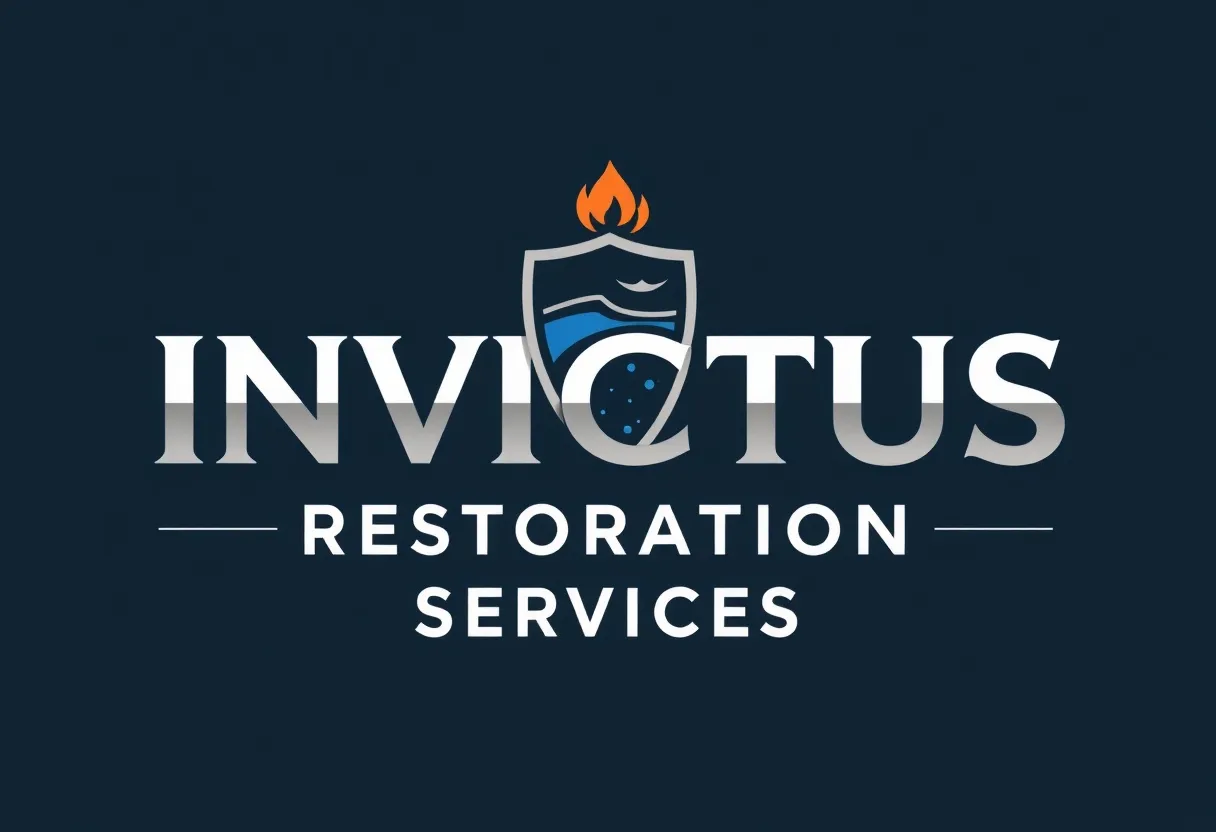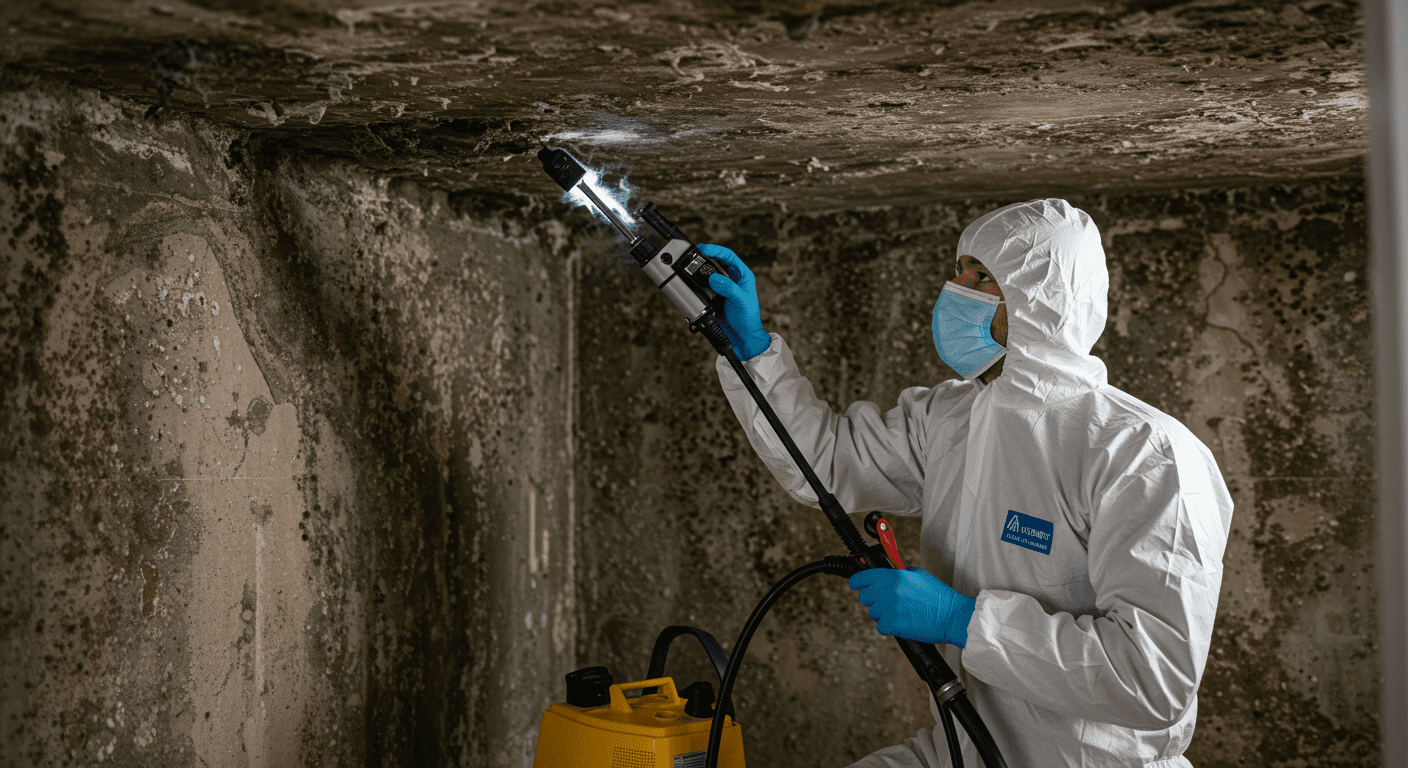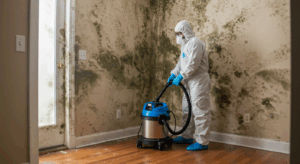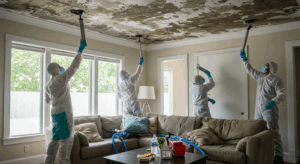Mold growth under your house is a common yet concerning issue, especially in areas like Cheyenne, WY, where fluctuating weather conditions can create the perfect environment for mold to thrive. Left unchecked, mold can cause structural damage to your home and pose serious health risks to you and your family. This guide will provide you with a comprehensive understanding of mold growth, its health implications, and effective strategies for removal and prevention.
Understanding Mold Growth Under Your House
What Causes Mold to Grow?
Mold thrives in damp, dark, and humid environments, making the space under your house an ideal breeding ground. Common causes of mold growth include water leaks, poor ventilation, and high humidity levels. In Cheyenne, WY, seasonal weather changes and occasional heavy rains can exacerbate these conditions, leading to moisture accumulation under homes. Additionally, poor drainage systems and inadequate insulation can contribute to persistent dampness, further encouraging mold growth.
Common Signs of Mold Infestation
Detecting mold early is crucial to preventing extensive damage. Common signs of mold infestation include a musty odor emanating from under your house, visible mold patches on wooden beams or insulation, and increased allergy symptoms among household members. You might also notice water stains or discoloration on walls and floors, which could indicate moisture issues. Regular inspections can help identify these signs before the problem escalates.

Health Risks Associated with Mold Exposure
Respiratory Issues and Allergies
Exposure to mold spores can lead to a range of respiratory problems, particularly for individuals with asthma or allergies. Symptoms such as coughing, sneezing, and nasal congestion are common, especially when mold spores are inhaled. Prolonged exposure can exacerbate these symptoms, making it difficult for affected individuals to breathe comfortably. Children and the elderly are particularly vulnerable to these health risks.
Long-term Health Effects of Mold
Beyond immediate respiratory issues, long-term exposure to mold can lead to more severe health problems. Chronic sinus infections, skin irritation, and even neurological symptoms have been linked to mold exposure. In extreme cases, toxic molds like Stachybotrys chartarum (commonly known as black mold) can produce mycotoxins, which may cause serious health complications. Protecting your family from these risks requires prompt action and effective mold remediation.
Effective Mold Removal and Remediation Strategies
DIY Mold Removal Techniques
For minor mold infestations, DIY removal techniques can be effective. Start by wearing protective gear, including gloves, goggles, and a mask, to avoid direct contact with mold spores. Use a mixture of water and detergent or a commercial mold remover to scrub affected areas. Ensure proper ventilation during the process to prevent mold spores from spreading. However, it’s important to note that DIY methods are only suitable for small-scale infestations and may not address the root cause of the problem.
When to Call Professionals for Mold Remediation
In cases of extensive mold growth or recurring infestations, professional mold remediation services are essential. Experts have the tools and expertise to identify the source of moisture, remove mold effectively, and prevent future growth. Professional services often include thorough inspections, advanced cleaning techniques, and the use of specialized equipment to ensure complete mold removal. If you’re dealing with persistent mold issues, consider reaching out to Expert Mold Cleaning Services in Cheyenne, WY for reliable solutions.
Preventing Mold Growth in Your Home
Best Practices for Moisture Control
Preventing mold growth starts with controlling moisture levels in and around your home. Ensure proper drainage systems are in place to direct water away from your foundation. Use dehumidifiers to maintain indoor humidity levels below 60%, and repair any leaks promptly. Sealing cracks in your home’s foundation and improving insulation can also help keep moisture at bay.
Regular Home Inspections and Maintenance
Routine inspections are crucial for identifying potential mold risks early. Check for signs of water damage, such as stains or peeling paint, and address them immediately. Inspect your home’s crawl spaces and basement regularly, as these areas are particularly prone to mold growth. For comprehensive prevention, consider scheduling a professional home mold inspection to assess your home’s vulnerability to mold.
Mold growth under your house is a serious issue that requires immediate attention. By understanding the causes and signs of mold, addressing health risks, and implementing effective removal and prevention strategies, you can protect your home and family from the harmful effects of mold. Whether you choose to tackle the problem yourself or seek professional assistance, taking action today will ensure a healthier and safer living environment for years to come.




